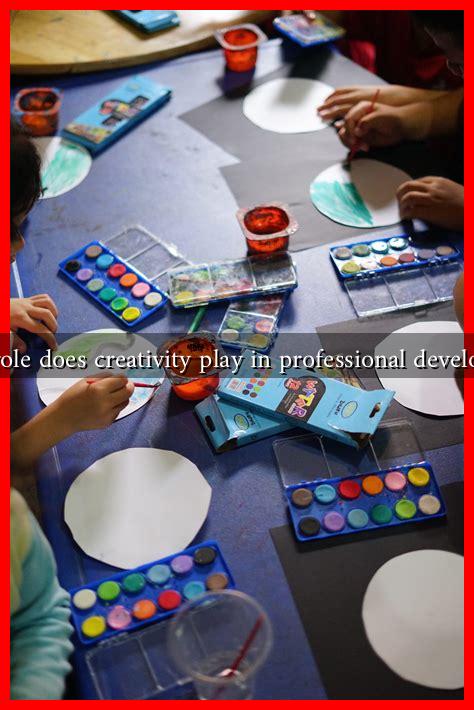-
Table of Contents
- What Role Does Creativity Play in Professional Development?
- The Importance of Creativity in the Workplace
- Case Studies: Creativity in Action
- Statistics Highlighting the Impact of Creativity
- Strategies for Fostering Creativity in Professional Development
- Conclusion: Embracing Creativity for Professional Growth
What Role Does Creativity Play in Professional Development?
In today’s fast-paced and ever-evolving work environment, creativity has emerged as a crucial component of professional development. It is no longer confined to artistic fields; rather, it permeates every industry, influencing problem-solving, innovation, and overall job satisfaction. This article explores the multifaceted role of creativity in professional development, highlighting its benefits, applications, and strategies for fostering a creative mindset.
The Importance of Creativity in the Workplace
Creativity is often associated with the arts, but its significance in the workplace cannot be overstated. Here are some key reasons why creativity is essential for professional development:
- Problem-Solving: Creative thinking enables employees to approach challenges from different angles, leading to innovative solutions.
- Adaptability: In a rapidly changing business landscape, creativity helps professionals adapt to new situations and technologies.
- Collaboration: Creative environments foster collaboration, encouraging team members to share ideas and build on each other’s strengths.
- Job Satisfaction: Engaging in creative tasks can enhance job satisfaction, leading to higher employee retention rates.
Case Studies: Creativity in Action
Several organizations have successfully integrated creativity into their professional development strategies, yielding impressive results. Here are a few notable examples:
- Google: Known for its innovative culture, Google encourages employees to spend 20% of their time on personal projects. This initiative has led to the development of successful products like Gmail and Google News.
- 3M: The company’s “15% rule” allows employees to dedicate a portion of their workweek to creative projects. This policy has resulted in the invention of the Post-it Note, a product that has generated billions in revenue.
- Pixar: The animation studio fosters creativity through its unique brainstorming sessions, known as “dailies,” where team members share ideas and provide constructive feedback. This collaborative approach has led to numerous award-winning films.
Statistics Highlighting the Impact of Creativity
Research supports the notion that creativity is vital for professional development. Consider the following statistics:
- A study by Adobe found that 78% of people believe that unlocking creativity is essential for economic growth.
- According to a report by the World Economic Forum, creativity is one of the top three skills needed for success in the workplace by 2025.
- Research from IBM indicates that 60% of CEOs view creativity as the most important leadership quality for success.
Strategies for Fostering Creativity in Professional Development
Organizations and individuals can take several steps to cultivate creativity in the workplace:
- Encourage Open Communication: Create an environment where employees feel comfortable sharing their ideas without fear of criticism.
- Provide Training and Resources: Offer workshops and resources that focus on creative thinking and problem-solving techniques.
- Promote Diversity: Diverse teams bring different perspectives, which can enhance creativity and innovation.
- Allow Flexibility: Give employees the freedom to explore their interests and passions, which can lead to creative breakthroughs.
Conclusion: Embracing Creativity for Professional Growth
In conclusion, creativity plays a pivotal role in professional development by enhancing problem-solving abilities, fostering collaboration, and increasing job satisfaction. Organizations that prioritize creativity not only benefit from innovative solutions but also cultivate a more engaged and motivated workforce. As the business landscape continues to evolve, embracing creativity will be essential for both individual and organizational success. By implementing strategies to foster creativity, professionals can unlock their full potential and contribute to a thriving workplace.
For further reading on the importance of creativity in the workplace, consider exploring resources from Forbes.

